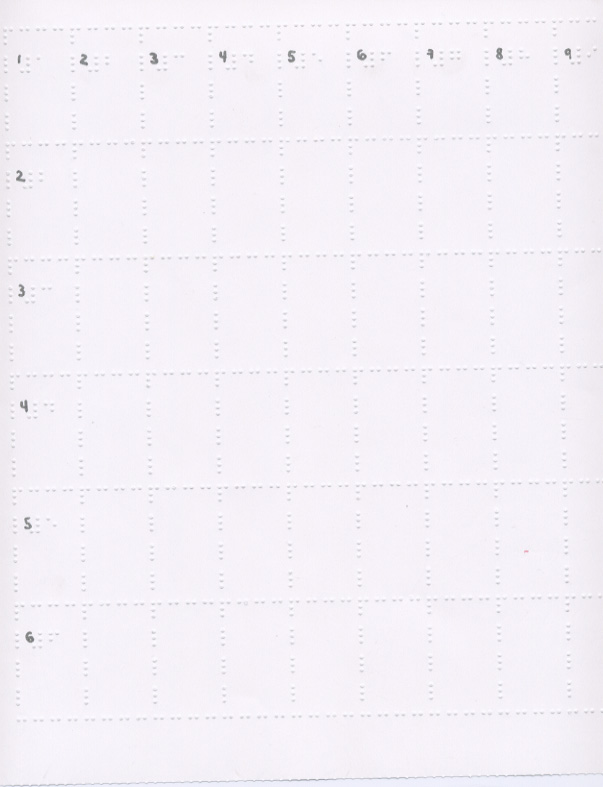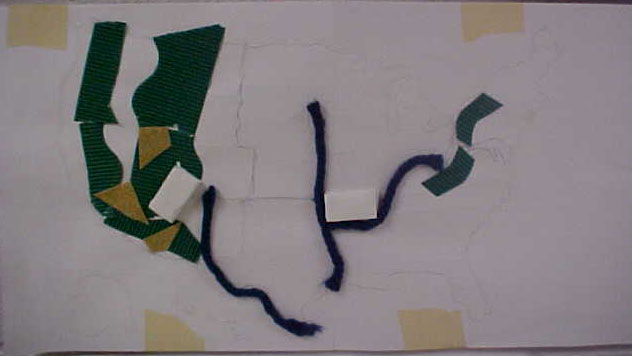|
For
an informal assessment in science I had the
students create crossword puzzles from the chapter
vocabulary. With the help of an aide that comes
in every morning to braille materials, we created
this "Braille Crossword Puzzle" for
the student's use.

(click
on the pictures for enlarged images)
|

The
United States map above was done at the end
of a unit about basic Geography and U.S. Regions.
The students combined their knowledge of U.S.
Geographical Regions and landforms
to create this 3-D map.

Working
with me as a guide, the student was able to
cut out and fashion many of the basic landforms
found in the U.S. including mountains, rivers,
plateaus, and deserts.
|